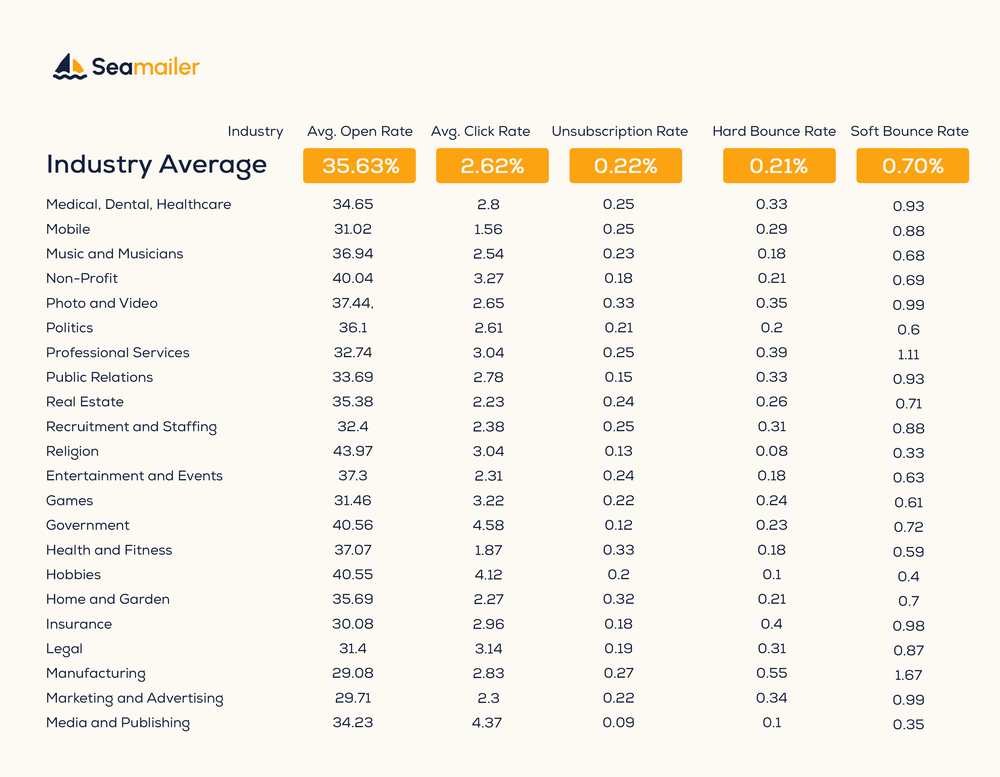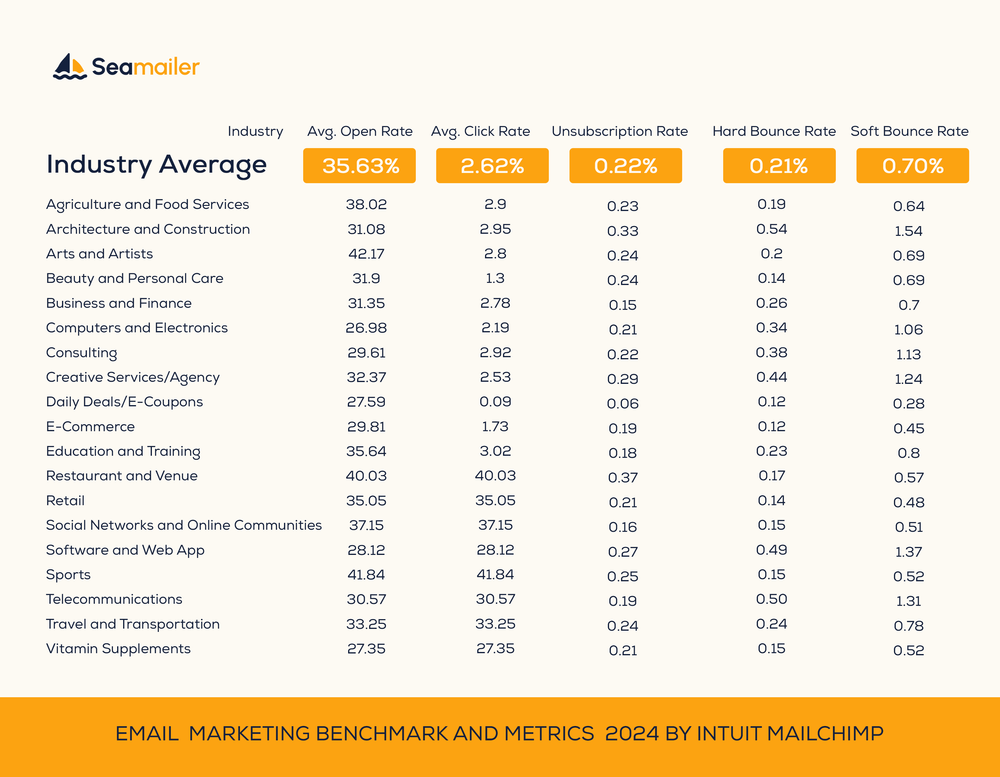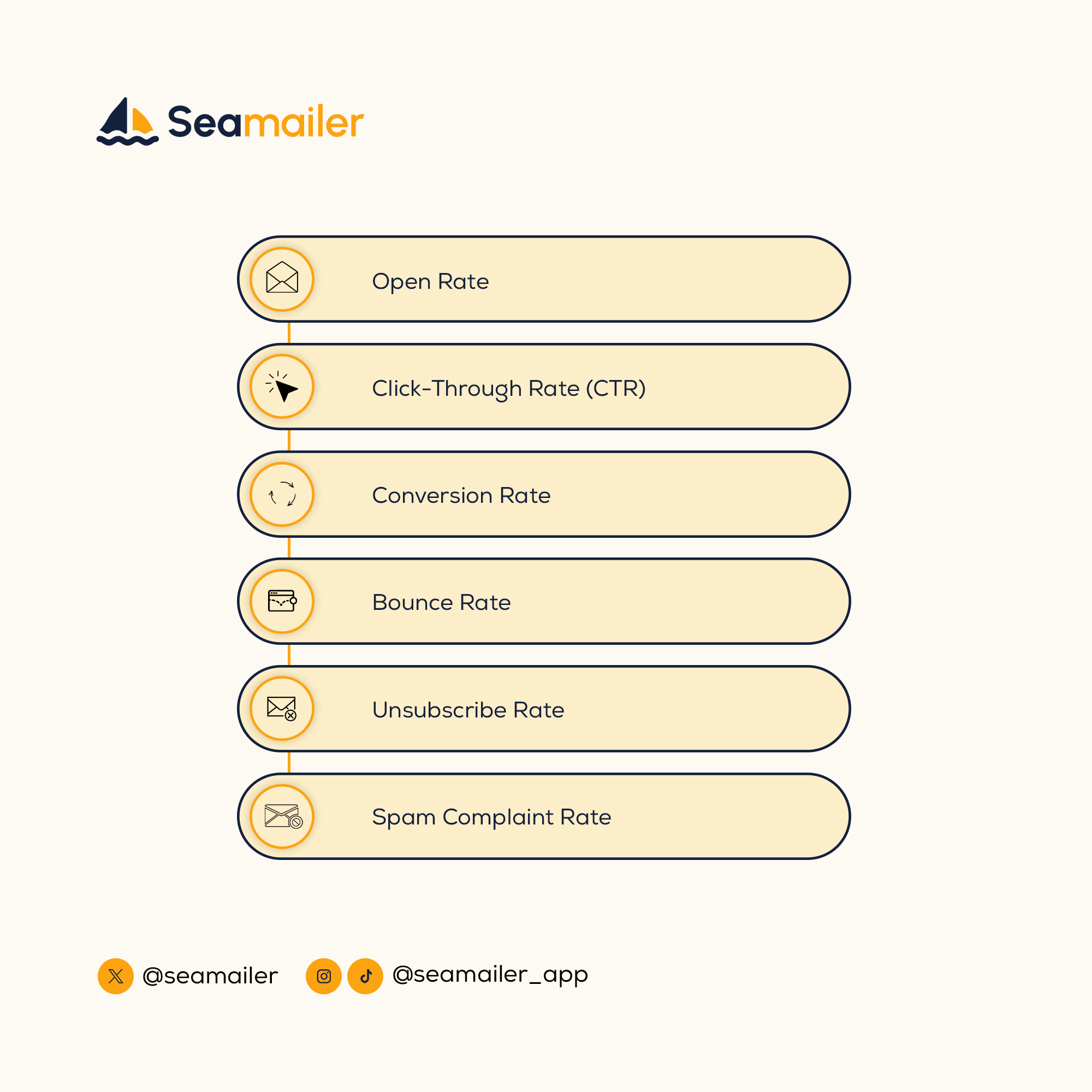Does Click-Through Rate Matter in Email Marketing?

When we first started Seamailer, we had a simple goal: to help businesses make meaningful connections with their audience. But one challenge became glaringly obvious early on—many marketers and small business owners were putting immense effort into creating email campaigns, only to be met with silence on the other end. Emails were being sent, yet the impact wasn’t being felt.
We quickly realized that a great email campaign is only as effective as its ability to drive action. If your audience isn’t opening your emails, let alone engaging with them, the rest of your marketing efforts crumble.
This isn’t just about sending messages into the void; it’s about delivering value that gets noticed and acted upon.
That’s where click-through rate (CTR) enters the picture. A low CTR often signals that your emails aren’t connecting the way they should.
Improving your CTR starts with focusing on what works—targeted content, compelling CTAs, and strategic timing.
Follow through to know:
- Why Click-Through Rates Matter
- Why click-through rate is crucial in email marketing
- The Numbers Behind CTR: What’s a Good Benchmark
- How Click-Through Rate Compares to Other Email KPIs
- CTR’s Impact on Search Engine Marketing (SEM)
- What Is CTR in the Context of SEM?
- Why CTR Is Crucial for SEM Success
- Strategies to Improve CTR in SEM Campaigns
- Factors That Influence Click-Through Rate
Why Click-Through Rates Matter
1. CTR Directly Impacts Conversions
A high click-through rate is often the first step toward achieving your ultimate goal: conversions. Whether it’s purchasing a product, signing up for a webinar, or downloading a resource, clicks are what guide your audience down the sales funnel. Without clicks, there’s no action.
2. Better CTRs Lead to Improved ROI
For email marketing to be profitable, you need a strong return on investment (ROI). By improving your CTR, you’re effectively increasing the chances of turning email recipients into paying customers. More clicks mean more opportunities for sales, which directly translates to better ROI.
3. CTR is a Health Indicator for Your Campaigns
A low CTR is a red flag that something isn’t resonating with your audience. It could be your subject line, email design, or the relevance of your content. Monitoring and optimizing CTR allows you to identify and address issues quickly.
For example, consider a blog that reviews kitchen appliances and discusses the latest features of various products. If you're sending emails to a list of subscribers who aren't interested in learning about the best budget blenders or the most advanced smart ovens available, your email click-through and open rates will likely suffer. Consequently, this can lead to a drop in your conversions and leads.
However, there's a silver lining. By tracking your click-through rates, you can identify which subscribers are genuinely interested in reading your blog.
4. Boosts Sender Reputation
Email platforms like Seamailer track engagement metrics, including CTR. High engagement signals to these platforms that your emails are valuable, increasing the likelihood that your future emails will land in the inbox rather than the spam folder.
Why Click-Through Rate is Crucial in Email Marketing
CTR is one of the most significant indicators of how well your email campaigns are performing. It measures the percentage of recipients who clicked on a link within your email, showing you how engaging and effective your content is. Here’s why it matters:
Click-Through Rate (CTR) being a key performance indicator that reflects the level of engagement recipients have with email content, a higher CTR indicates that the email's message and call-to-action effectively capture the audience's interest.
Moreover, a strong CTR positively impacts sender reputation and email deliverability. Higher engagement rates signal to email service providers that the content is relevant and valuable, which can improve overall inbox placement for future campaigns. a Good Benchmark?
The Numbers Behind CTR: What’s a Good Benchmark
The average CTR varies by industry, but a good rule of thumb is to aim for a rate between 2-5%. Some niches, like B2B marketing, might see higher averages, while others, like e-commerce, may hover on the lower end.


Average Email Click-Through Rates by Industry in Email Marketing
Understanding email click-through rates (CTR) is crucial for marketers as it varies significantly across different industries. Here's a breakdown of average CTRs for various sectors:
- E-commerce: Typically sees CTRs around 2.5% to 3.5%, driven by promotional offers and product recommendations.
- Retail: Often averages between 2.0% to 3.0%, influenced by seasonal campaigns and sales events.
- Travel and Hospitality: Generally ranges from 3.5% to 5.0%, as enticing travel deals can prompt higher engagement.
- Finance and Insurance: Usually has CTRs between 1.5% to 2.5%, with informative content on financial products contributing to click rates.
- Nonprofits: Often experiences higher engagement, averaging around 3.0% to 4.0%, thanks to compelling calls to action for donations.
- Education: Typically sees CTRs of about 2.5% to 3.5%, with interest in course offerings and educational content.
- Technology: Generally ranges from 2.0% to 3.0%, focusing on product updates and tech insights.
These averages highlight the importance of industry context when evaluating email marketing performance. By understanding your industry's benchmarks, you can set more effective goals and improve your email campaigns.
How Click-Through Rate Compares to Other Email Key Performance Indicator (KPIs)
To better assess the total impact of your campaign, it's critical to take into account and use click-through rate in conjunction with other email KPIs.

Let’s break down CTR’s role alongside other popular email KPIs:
Open Rate
Open Rate is the percentage of recipients who opened your email, indicating how effective your subject line and sender name are; it measures the first level of engagement compared to CTR, which reflects deeper engagement.
Click-through Rate
Click-through rate (CTR) is the percentage of people who click on a link after seeing it. It is calculated by dividing the number of clicks by the number of impressions and multiplying by 100. A higher CTR indicates strong engagement and effective marketing.
Conversion Rate
The percentage of recipients who completed a desired action, such as making a purchase, showing how effective your email is at driving outcomes; CTR is a precursor to conversions, as clicks are needed to drive them.
Bounce Rate
The percentage of emails that couldn’t be delivered, helping monitor the health of your email list; unlike CTR, which focuses on engagement, bounce rate highlights delivery issues.
Unsubscribe Rate
The percentage of recipients who opt out of your email list, reflecting how well your email aligns with audience expectations, whereas CTR highlights engagement and success.
Spam Complaint Rate
The percentage of recipients who mark your email as spam, signaling potential deliverability issues; a high CTR can counteract this by showing positive engagement.
CTR’s Impact on Search Engine Marketing (SEM)
In the dynamic world of digital marketing, click-through rate (CTR) plays a pivotal role in determining the success of search engine marketing (SEM) campaigns. Whether you're running pay-per-click (PPC) ads on Google Ads or Bing Ads, understanding CTR and its influence on your campaigns can drive better results and higher ROI.
For marketers, startup founders, creators, and SMB owners, optimizing CTR isn’t just about clicks—it’s about leveraging data to make informed decisions that propel your business forward.
What Is CTR in the Context of SEM?
CTR measures the percentage of users who click on your ad after seeing it. It’s calculated as:
CTR = (Clicks / Impressions) x 100
For example, if your ad is shown 1,000 times and receives 50 clicks, your CTR is 5%.
Why CTR Is Crucial for SEM Success
CTR isn’t just a performance metric, it’s a cornerstone of Search Engine Marketing effectiveness. Here’s why:
1. Quality Score Boost
Search engines like Google use CTR as a key factor in determining Quality Score. A higher Quality Score means:
- Lower cost-per-click (CPC)
- Better ad placements
- Increased visibility
2. Increased Return on Investment(ROI)
A higher CTR means more users are engaging with your ads, which often translates to improved conversions or Return on Investment. When combined with strong landing pages and CTAs, CTR can significantly impact your bottom line.
3. Better Audience Insights
Analyzing CTR helps you understand what resonates with your audience. High-performing ads provide valuable insights into messaging, design, and targeting.
Strategies to Improve Click-through Rate (CTR) in Search Engine Marketing (SEM) Campaigns
If your CTR isn’t where you want it to be, these strategies can help:
1. Write Compelling Ad Copy
Use high-volume keywords such as “Email Marketing Software,” “Best SEM Tools,” or “Affordable Marketing Solutions” to align with user intent. Highlight unique value propositions like free trials or exclusive features.
2. Leverage Ad Extensions
Ad extensions increase your ad’s visibility and offer more opportunities for engagement. Popular extensions include:
- Sitelinks: Direct users to specific pages.
- Callouts: Highlight benefits like “24/7 Support” or “No Credit Card Required.”
- Structured Snippets: Showcase features like “Automation” or “Integration with CRM.”
3. Target the Right Audience
Refine your targeting options based on demographics, geography, and user behavior. For example:
- Marketers: Focus on advanced analytics.
- Startups: Highlight cost-effectiveness.
- Creators: Showcase ease of use.
4. Optimize for Mobile
With over 50% of clicks originating from mobile devices, ensure your ads and landing pages are mobile-friendly. Use concise copy and fast-loading pages.
5. A/B Test Continuously
Experiment with different headlines, descriptions, and CTAs to identify what drives the highest CTR. For example, compare:
- Headline A: “Boost Your Email Marketing ROI Today”
- Headline B: “Try Seamailer: The Smart Choice for Marketers”
Factors That Influence Click-Through Rate
Many elements can impact your CTR. Let’s break them down:
- Subject Lines:
- A subject line sets the tone for your email. If it’s uninspiring, your open rates (and by extension, your CTR) will suffer.
- Example: Instead of "10% Off All Items," try "Your Exclusive 10% Off Awaits!"
- Call-to-Action (CTA):
- Your CTA should be clear and compelling. Use action-oriented language like “Shop Now” or “Learn More.”
- Personalization:
- Emails that use personalized content see higher engagement rates.
- Example: “Hi [First Name], we thought you’d love this deal!”
- Timing:
- When you send your emails matters. Analyze your audience’s behavior to identify optimal send times.
- Email Design:
- Ensure your emails are mobile-friendly. Over 50% of emails are opened on mobile devices.
Conclusion
In the ever-evolving landscape of email marketing, click-through rate (CTR) isn’t just a metric—it’s a compass that guides your campaign's success.
A strong CTR indicates that your content resonates with your audience, encouraging them to take the next step, whether that’s exploring your website, engaging with your brand, or making a purchase.
Neglecting CTR is like sending emails into the void, hoping for results without tracking the actions that truly matter. By focusing on improving this crucial metric—through personalized content, strategic timing, and clear calls-to-action—you’re not just boosting numbers; you’re building stronger connections with your audience.
Ultimately, a high CTR means your emails are doing what they’re meant to do: engaging your audience and driving meaningful outcomes. In email marketing, it’s not just about being heard; it’s about inspiring action. And when you prioritize CTR, you’re setting the foundation for campaigns that deliver real results.
You're one email away from achieving your business growth goals. Start right away with a free forever trial.

